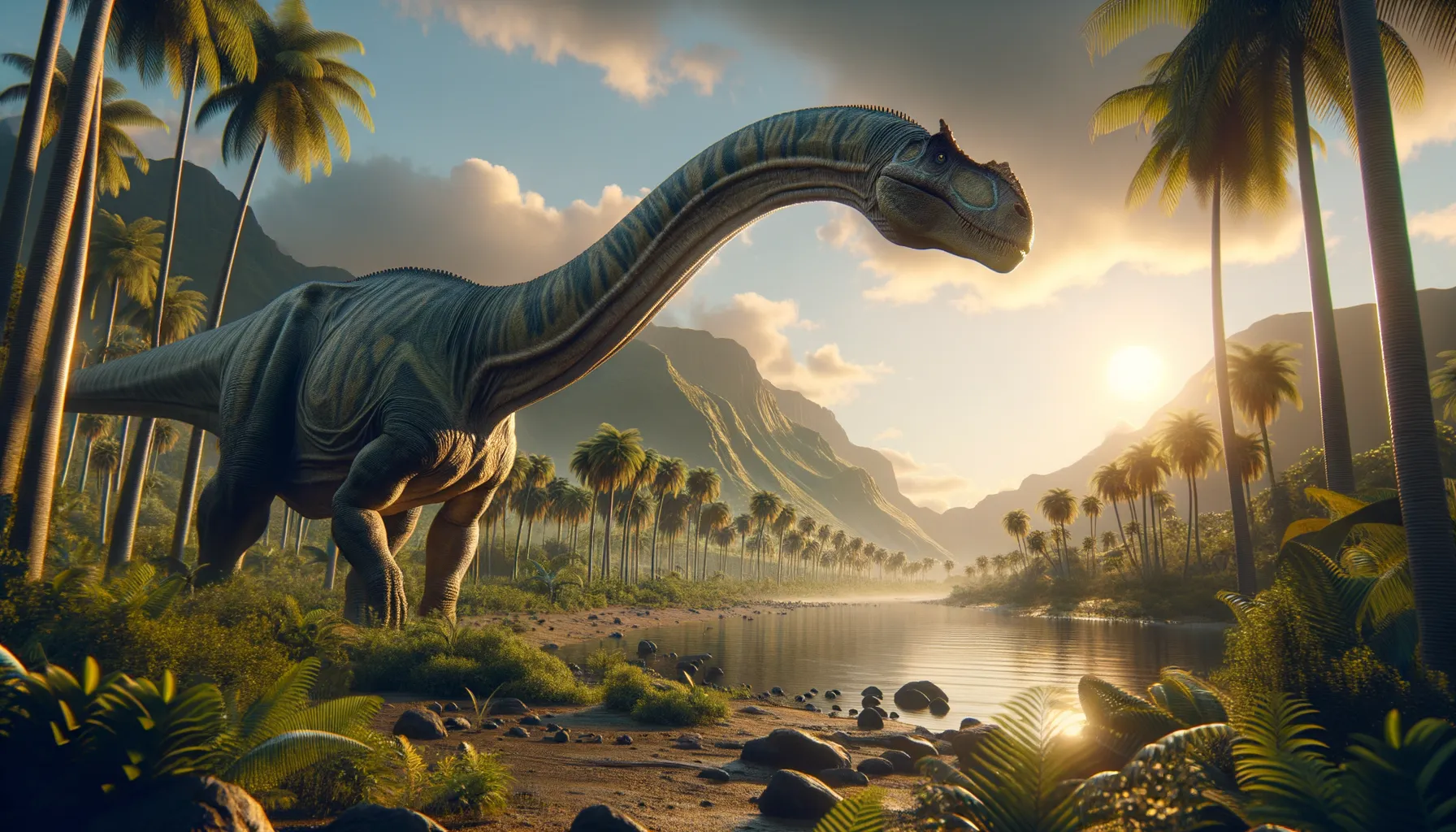
Sulaimanisaurus
The gentle giant of the ancient world.
Period
Cretaceous
Length
Approximately 60 to 70 feet long.
Height
Roughly 20 to 25 feet tall at the shoulder.
Weight
Estimated to weigh around 15 to 20 tons.
Sulaimanisaurus was a massive herbivorous dinosaur from the late Cretaceous period. It was part of the titanosaurs, a group known for their large size and long necks. This dinosaur roamed the area that is now southern Asia, using its immense size to fend off predators. Its fossils provide important insights into the diversity of sauropods in this region during that time.
Diet
Sulaimanisaurus primarily fed on plants, using its long neck to reach high vegetation and ground-level foliage. Its massive size required a substantial amount of food each day, likely focusing on ferns and coniferous plants common in its environment.
Hunting
Being a herbivore, Sulaimanisaurus did not hunt but rather grazed for food. Its large size deterred most predators, allowing it to feed relatively undisturbed.
Environmental challenges
Sulaimanisaurus faced environmental challenges such as drastic climate changes that affected vegetation availability. The shifting landscape occasionally forced them to migrate in search of more fertile feeding grounds. Predators such as large theropods might have posed threats, particularly to the young and weak.
Speed
Likely slow-moving due to its massive size.
Lifespan
Could live several decades, similar to modern large reptiles.
First discovery
Discovered in southern Asia during the late 20th century.
Fun Facts
- Sulaimanisaurus was a massive dinosaur that lived during the late Cretaceous period around 70 million years ago.
- This dinosaur was a long-necked herbivore, part of the titanosaur group, which were among the largest creatures to ever walk the Earth.
- Sulaimanisaurus fossils were first discovered in what is now Pakistan, providing valuable insights into the dinosaur diversity of that region.
- The name Sulaimanisaurus comes from the Sulaiman Mountains, where its fossils were found, and it honors the location of its discovery.
- Like many large dinosaurs, Sulaimanisaurus likely traveled in herds to protect themselves from predators.
Growth and Development
Young Sulaimanisaurus grew rapidly for the first few years, a strategy to avoid predation by reaching a size too large for most predators. Their development involved growing and shedding multiple sets of teeth to handle their herbivorous diet. As they matured, these dinosaurs became more capable of long migrations in search of food.
Habitat
Sulaimanisaurus lived in varied environments, including floodplains and semi-arid regions. Abundant plant life was essential, supporting its herbivorous diet. The climate of its habitat imposed limitations on its movement, as seasonal changes in vegetation density dictated its migratory patterns.
Interaction with other species
Sulaimanisaurus coexisted with other herbivores, often forming herds to provide safety in numbers. They might have engaged in indirect competition for food resources with these herbivores. Its presence in the ecosystem impacted other species by contributing to the shaping of vegetation patterns and influencing the local food web dynamics.
Natural lifespan
Sulaimanisaurus lived naturally up to around 70 years.
Reproduction
Sulaimanisaurus is thought to have laid eggs in communal nesting sites, a strategy promoting survival through large clutch numbers. Mating season would trigger migrations to suitable nesting grounds. The young likely received no parental care, left to fend on their own shortly after birth.
Social behaviour
Sulaimanisaurus may have formed loose social groups or herds as a defensive mechanism against predators. However, these social structures were probably fluid, influenced by resource availability. Group dynamics within the herd could have involved coordinated movements during migrations, guided by older and more experienced individuals.
Fossil locations
Fossils of Sulaimanisaurus have been primarily found in the region that is now southern Asia. The discovery sites provided significant sauropod remains that expanded understanding of dinosaur distribution in the Cretaceous. These fossils were identified from sedimentary rock layers, indicating historical floodplain habitats.
